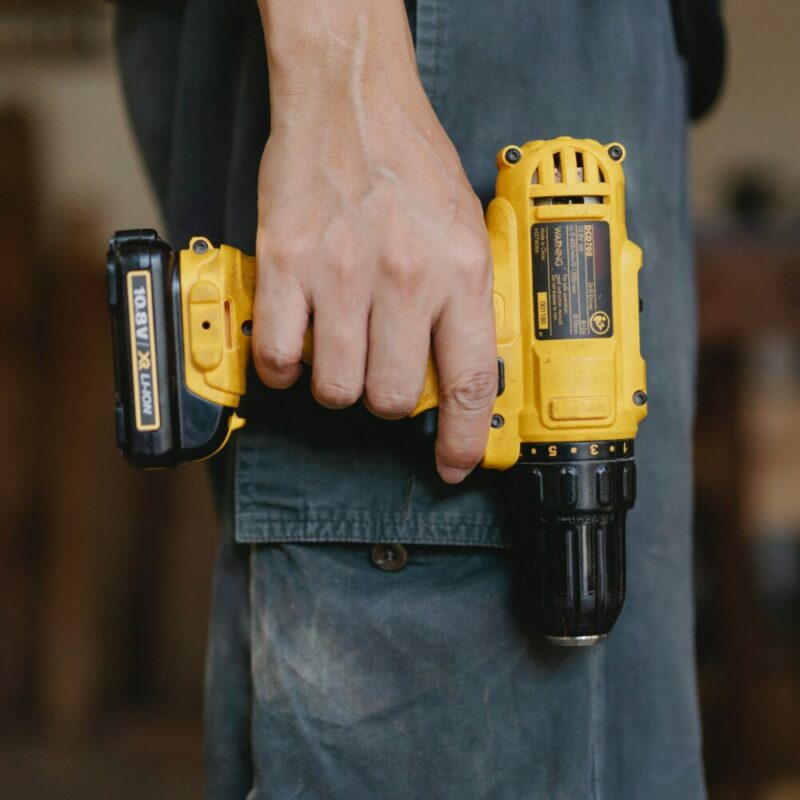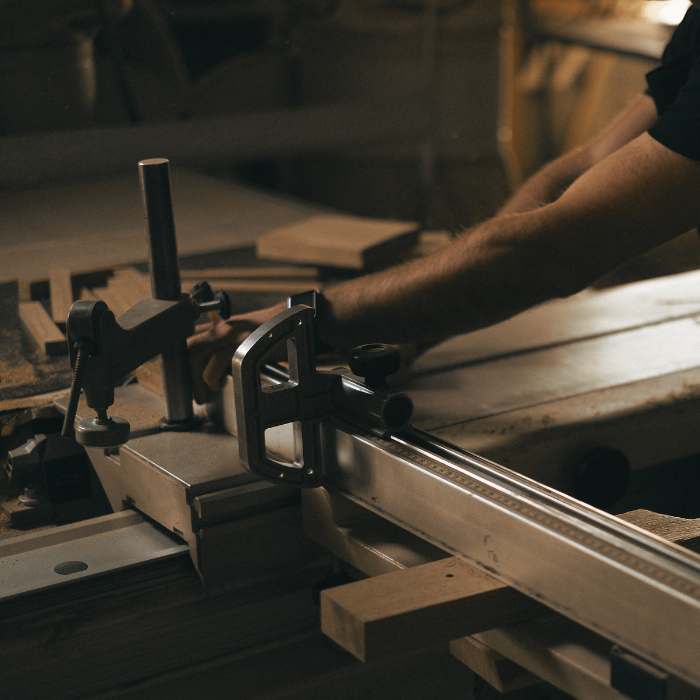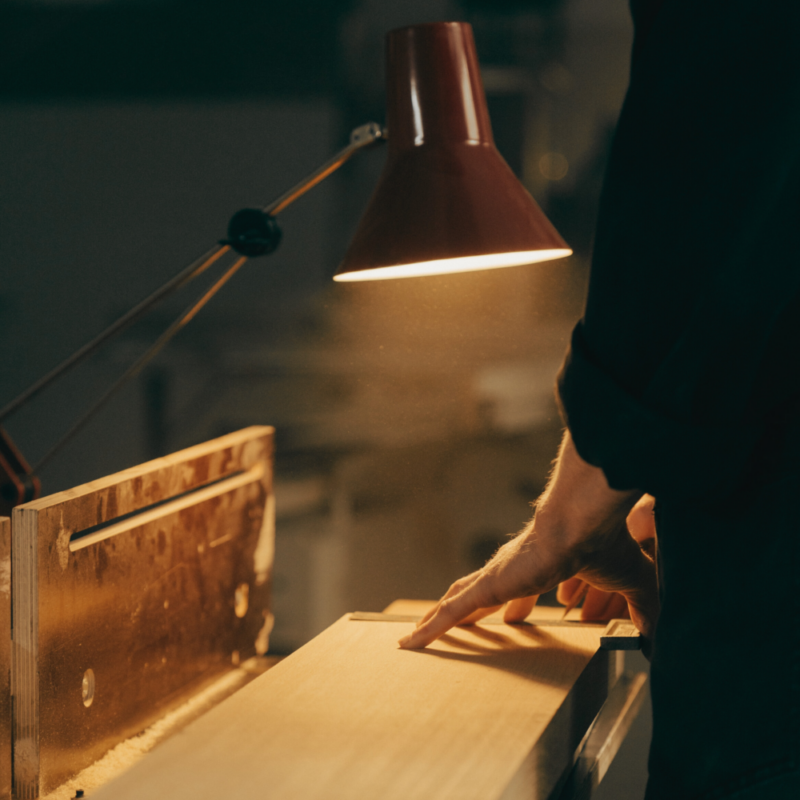Uncategorized
Maintaining Safe Distances to Combustible Surfaces
A question which arises too often in my opinion, relates to correct clearances surrounding stoves and the safe distance from unprotected flue pipes to combustible surfaces.
Firstly, neither Building Regulations nor British/European Standards provide guidance on recommended distances from the hot surface of a space heating appliance to adjacent walls. The reasoning is simple – there are many appliances, old and new, of differing design, construction and output. The surface temperatures will undoubtedly vary from one model to another, especially as the fire-bed temperature can rise and fall depending on burning rate. However, to be clear on this issue, recommended minimum clearance figures can only be determined by the appliance manufacturer following extensive testing and should be included in their installation instructions. Equally, two figures must be provided – ie. the distance to both fully non-combustible surfaces and to combustible materials. Sadly, I am aware from past experience that not all manufacturers provide this data.
The figure for clearance to surrounding walls ensures there is sufficient air movement around the appliance to cool the surface and prevent damage to the appliance body as a consequence of overheating. Equally, the warm air stripped from the appliance body is intended to heat the room by way of convection. Therefore an incorrectly fitted stove is unlikely to heat the room as required which may lead to distortion of the stove body and invalidate the manufacturer’s warranty.
Second, the short answer to the latter question is to refer you to Building Regulations Approved Document J (2010 edition), which clearly shows in diagram 19 that the clearance to combustible materials from an uninsulated flue pipe shall be 3 x diameter of the flue pipe. Therefore, a standard 150mm (6”) flue pipe would need to be at least 450mm (18”) away from any combustible surface. Fitting a non-combustible heat-shield with a 12mm air gap will permit you to reduce the clearance by 50%. Note that this recommended clearance is measured at right angle to the flue pipe, not diagonally as is often believed.
The above explanation is straightforward enough but surprisingly some people appear to have difficulty identifying what is classified as non-combustible and what is not.
In layman’s terms non-combustible refers to any material which will not ignite regardless of ambient temperature. I refer to brickwork, concrete blockwork and standard sand/cement render with plaster skim.
The term does not apply to plasterboard, especially when attached to wooden battens or studwork. Simple schoolboy physics will tell you that heat can be transmitted by radiation convection and conduction. In this example, heat will be conducted through wall coverings into whatever is behind.
Thus, a ceramic tiled plasterboard surface nailed to wooden battens will allow heat to be transmitted by conduction through the tiles and plasterboard into the timber behind and thereby increase the temperature to a potentially dangerous level. Also, it is worth mentioning that regular plasterboard is not classified as non-combustible due to the paper finish which will char before igniting at approx. 233°C, therefore plasterboard adhering directly to a blockwork wall surface is equally at risk.
A rudimentary internet search lead me to the following facts:
‘Subject to variability of wood types and condition, wood will char at between 120°C and 150°C and ignite at between 190°C and 260°C. At about 300°C wood releases combustible gasses which can ignite, raising the temperature to about 600°C.’
‘Every material has an ‘auto-ignition point’ at which it will spontaneously ignite without any external source of ignition. At 300°C wood starts to release hydrocarbons which react with oxygen and combust.’
It is worrying how often one comes across potentially dangerous situations as a consequence of the misguided belief that a ceramic tile will protect the sub-strata from a fire risk, or that standard plasterboard is a non-combustible surface. Specific fire rated wall boards are available but you would need to consult the manufacturers to specify the most appropriate for the application.
Of course, maintaining safe clearances should ensure the risk is minimised. If the problem relates to the appliance selection, you would perhaps need to consider a stove of smaller dimensions. If this option is impossible or unacceptable to the customer, consider whether you should continue the job.
If the issue concerns clearance to the flue pipe you could alternatively fit a length of twin wall insulated flue system which will allow much reduced distances to any combustible materials – again check the flue manufacturer’s spec.
As I have written previously, remember that ultimately you are legally responsible if a house fire results from a defective installation, even if you are retro-fitting to a fireplace recess provided by someone else. Always double-check site conditions for the benefit of all.
Do not assume every installation will be operated in a safe manner. I have come across an instance where a customer who was cleaning the fire inadvertently left a stove, burning mineral fuel, with the ash-pit door removed whilst answering the door-bell. On returning the appliance and flue pipe was found to be glowing red hot with suspected flue gas temperatures in excess of 1000°C. Any combustible materials within close proximity would undoubtedly have ignited, although thankfully in this instance all was OK. However my advice is to always be aware of the worst case scenario.
Much of our safe installation practices relate to scenarios addressed within Building Regulations and/or British Standards in traditional built properties. However, there are some situations which are inadequately covered by any current documentation, yet you could find yourself legally responsible in the event of an incident.
I refer to solid fuel stoves installations into Mobile Homes, Caravans, Leisure Park Homes, Wooden Garden Lodges, Glamping Pods and Yurts. These structures are not covered by any Building Regulation and the only British Standard which can be consulted is BS 6762 – 2: 1991, ‘Services for leisure accommodation, vehicles and transportable accommodation units’. This Standard is grossly out of date and not fit for current purpose whilst most of the above list is not even mentioned within the scope of the document.
The market for these products has expanded over the past quarter century, together with the popularity of wood burning stoves. So you may well be asked by an owner or site agent to undertake installation work in this type of construction.
What all these structures have in common is the combustibility of materials used in of their build. Made of either wood or canvas there is a high risk of fire and subsequent injury; whilst their compact design often results in decorations and furnishings being located too close to the appliance. Therefore, observance of safe distances to combustible materials is paramount, yet little or no guidance is provided by suppliers or manufacturers of these property types.
In brief, there is risk of fire within the living space, whilst the flue pipe is often seen passing through a roof made from easily combustible materials with scant regard for safe clearances.
Clearly, some clear guidance is required to ensure all future installation work is safe and fit for purpose. In addition, a new code of practice could encourage responsible owners to review the safety of current stock. It is to be hoped that the British Standards Institute may favourably consider this an important project for the future.
Meantime, I urge anyone invited to install a stove into a property of this type to fully investigate all potential risks and proceed with caution.
Meantime, it would be worthwhile considering the new L2 NVQ Qualification (Education and Training in the Chimney Sweeping and Chimney Engineering Trades) currently on offer by NACE which, among many other headings, includes clarification on the legal responsibilities of contractors.
 PLANT A TREE WITH EVERY PURCHASE!
PLANT A TREE WITH EVERY PURCHASE! 








